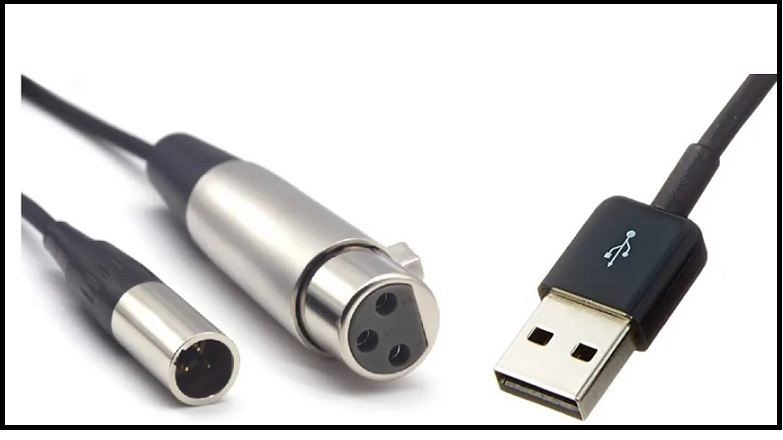
When looking to capture audio for a podcast, broadcast, or other recordings, there are two types of microphones available. These are USB and XLR microphones. Both have their own set of characteristics, and depending on what it is you want to record, you may prefer to choose one over the other.
But what are the differences between a USB microphone and an XLR microphone? And what are the pros and cons of each of them? Come with us as we guide you through USB vs XLR microphones and give you all you need to make an informed decision as to which to choose.
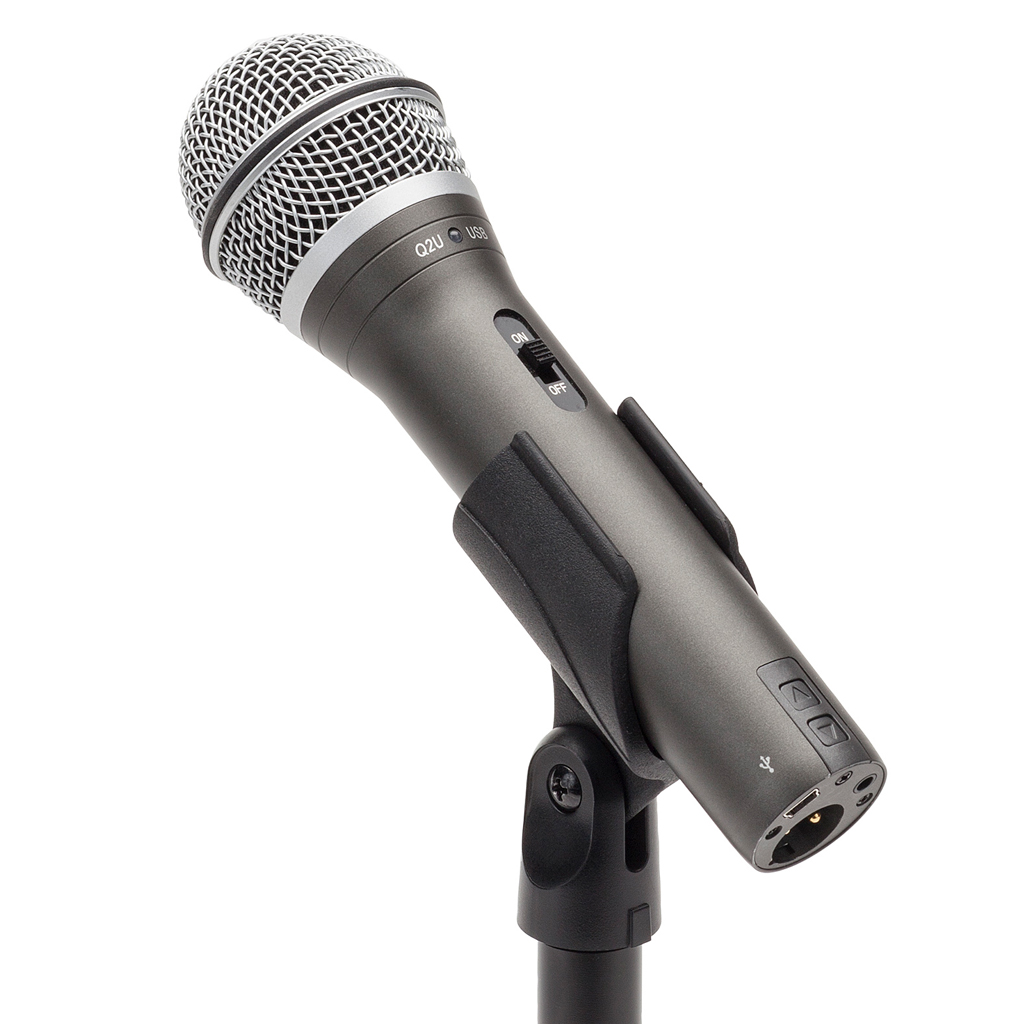
The main difference between a USB microphone and an XLR microphone is the type of connector they use.
A USB microphone uses a USB cable to connect directly to your computers. They are generally plug-and-play, though some will come with their own software or drivers. However, normally you can plug a USB microphone straight into your computer and begin recording immediately.
XLR microphones are the most common type of microphone available and use an XLR cable. When you see a singer with a microphone in their hand, with a long cable snaking away from it, that’s an XLR microphone. Or any time you see a microphone in a recording studio, that’s what it will be — an XLR microphone.
XLR microphones normally have a three-pronged male-to-female connector. This will connect to a device, usually some kind of audio interface, which will then connect to your computer. You cannot connect an XLR microphone directly to a computer.
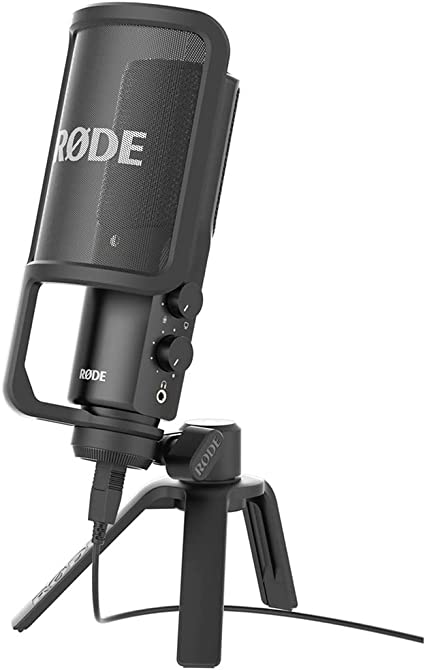
USB (which stands for Universal Serial Bus) Microphones have several different features, pros, and cons when used for audio recording.
The main feature of a USB microphone is simplicity. USB microphones are incredibly easy to use, and even the most inexperienced podcaster or content creator can get comfortable with one in seconds.
Compatibility is another important feature. Because all computers support USB you don’t have to worry about whether it will work with your particular hardware or operating system. You can just plug in and go.
USB microphones mostly connect using the USB-A connector. Some will now ship with USB-C adapters as the USB-C connector becomes more common, but almost all still come with USB-A as standard.
They are also normally cheaper than XLR microphones. While there are expensive USB microphones, just as there are cheap XLR microphones, USB does tend to come with a lower price tag.
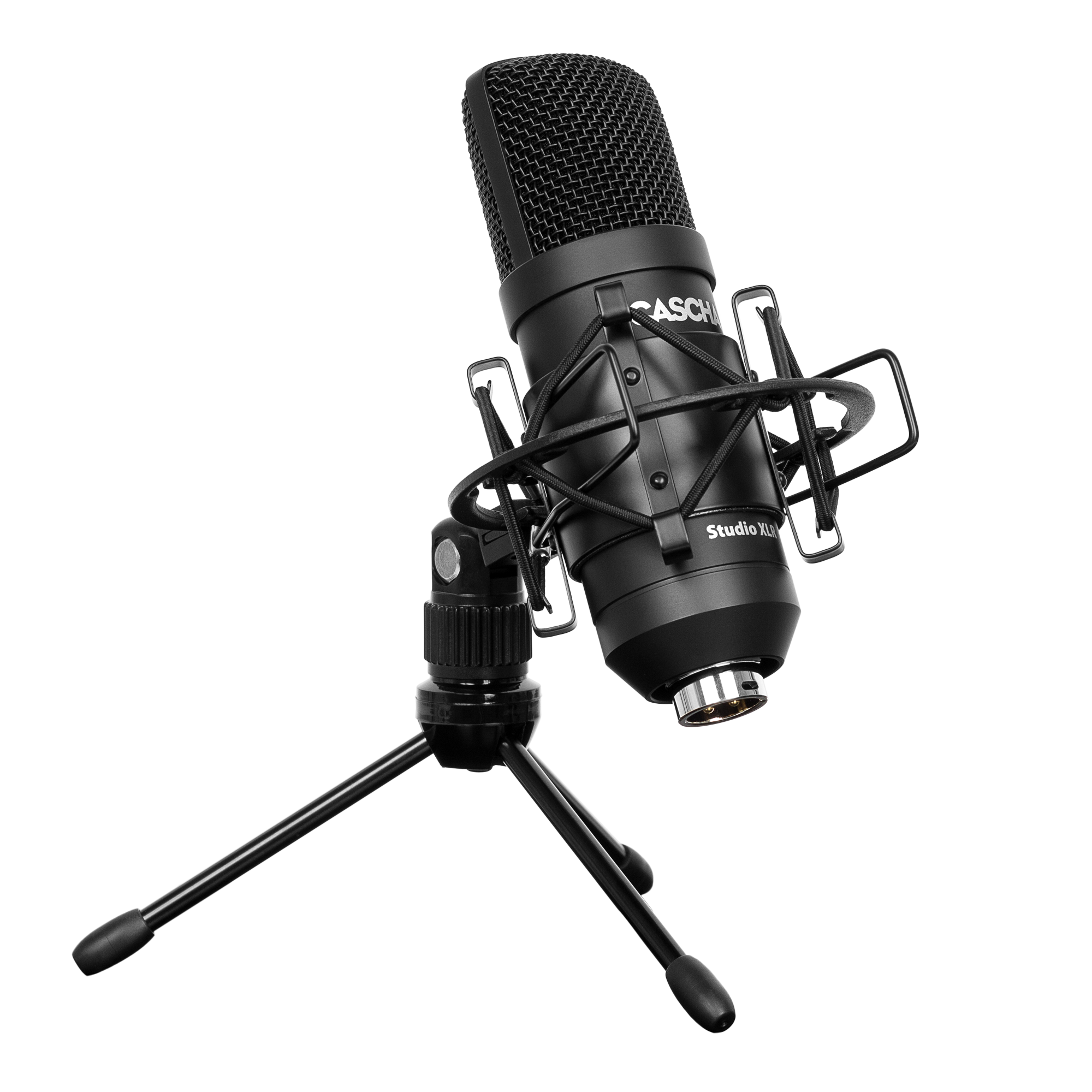
XLR (eXternal Line Return) microphones are the most common type of microphone there is. Here are some of their features, pros, and cons.
XLR mics are an industry standard. They have been around for decades, and are used on stage, in recording studios, and for podcasting, streaming, and broadcasting.
If you are looking for quality sound, then XLR microphones are traditionally where you would go. While USB microphones are improving in quality all the time, XLR mics still rule the roost.
There are three types of XLR microphones. These are:
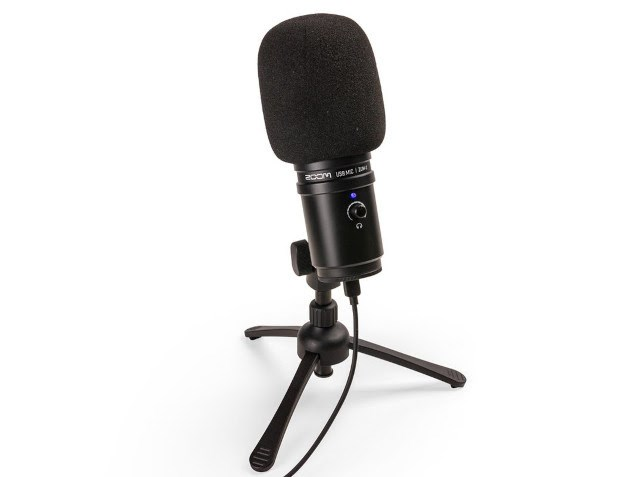
One of the most important things to consider when buying a microphone is how many people you are going to be recording. If you are just recording yourself, for example as part of a podcast, then a USB mic will likely be more than sufficient for your needs.
If you need to record multiple people simultaneously, then an XLR microphone is going to be a better option.
It’s also worth considering whether you are likely to want to upgrade. If you are recording a podcast, a single microphone is likely to be sufficient and you probably don’t need to worry about upgrade paths.
However, if you are recording vocals for music, or if you think your set-up is going to need to develop over time then opting for an XLR microphone solution might be a better approach.
Experience is also worth keeping in mind. USB microphones require next to no technical knowledge and can be deployed pretty much instantly as long as you have a computer in hand. XLR microphones require additional hardware, setup, and preparation before you can even begin to record.
XLR microphones are considered better for singing. This is because they are balanced — the positive and negative cables are balanced against each other. This means that they screen out background sounds so the only thing captured is the voice.
USB cables, by contrast, are unbalanced and so background sounds or interference are more likely to be picked up. For a single voice on a podcast, this doesn’t matter too much, but when recording vocals it can make all the difference.
XLR microphones also offer additional versatility with the different types of microphones on offer — ribbon, condenser, and dynamic.
Each can be selected and easily swapped out depending on the type of singing required. For example, condenser mics can capture quiet, low-volume sounds whereas a dynamic mic might be a better choice for louder rock vocals.
Being able to simply swap one mic out for another via an XLR cable means that XLR microphones can be adapted to any circumstance, whereas with a USB mic you are stuck with what you have.
Whether you choose a USB or XLR microphone depends on a number of different factors.
Cost is obviously a critical one, and USB mics are usually cheaper. However, an XLR mic can offer higher quality and a more flexible setup.
The number of people you want to record is also a significant factor to bear in mind, with XLR offering the chance to record more people simultaneously, while a USB mic offers a more cost-effective method of recording just one individual.
However, whether you are building your first home studio, recording a podcast, or going fully professional, you now know enough to make an informed opinion. So get out there, make a choice, and start recording!
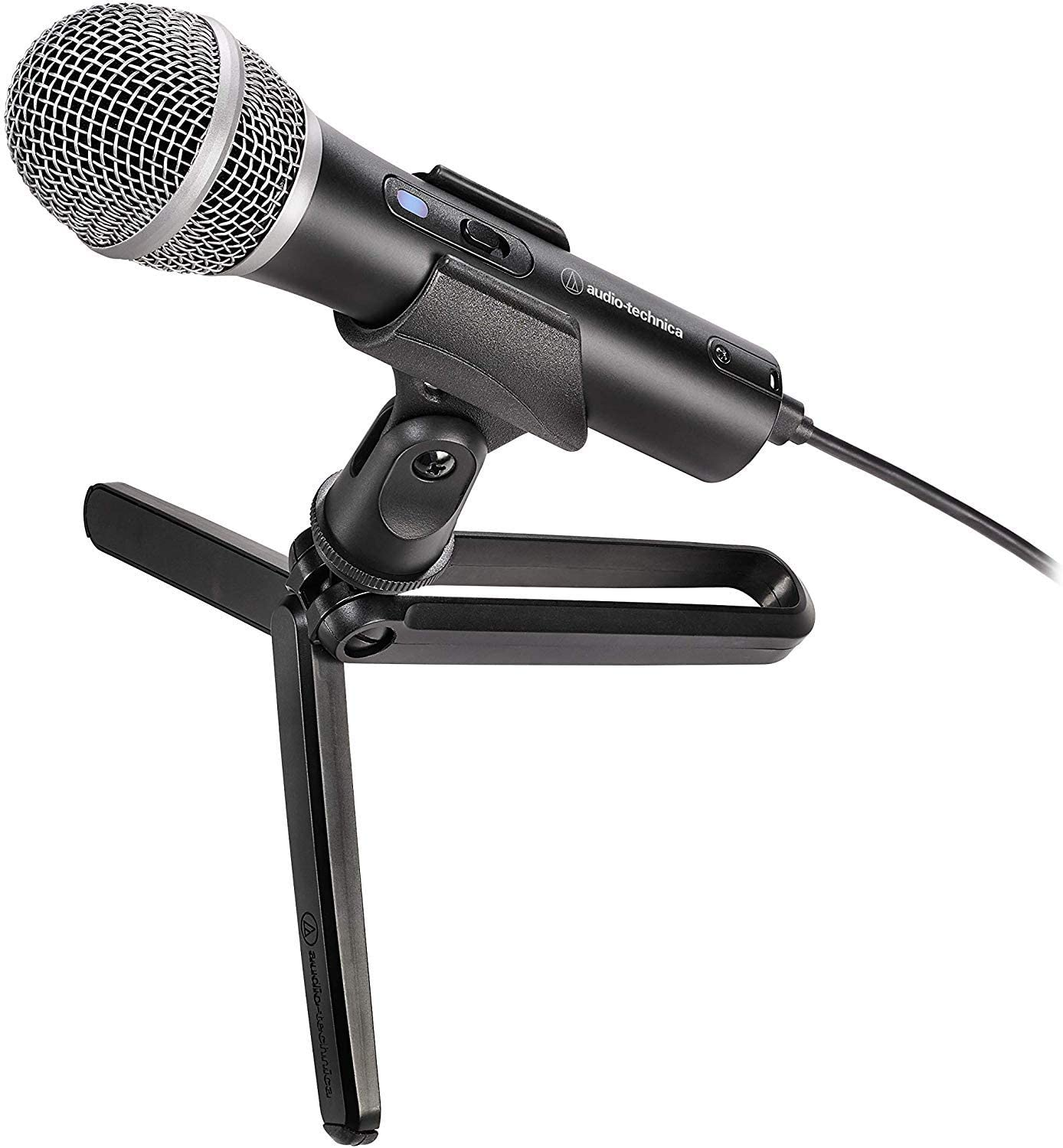
As a general rule, the answer to this question is “yes”. But it is not quite as simple as that.
USB microphones have improved by leaps and bounds in recent years. A good-quality USB microphone can deliver amazing performance, especially when paired with good audio software.
If you need to record speech or dialogue then choosing a USB mic is likely more than sufficient.
However, XLR is still an industry standard for good reasons. The sound quality really is unbeatable, and that’s why you find XLR microphones in every professional set-up in the world.
The flexibility and adaptability also give XLR microphones a real edge that USB cannot compete with. And the ability to update and upgrade components on an ongoing basis means that sound quality improvements can be ongoing.
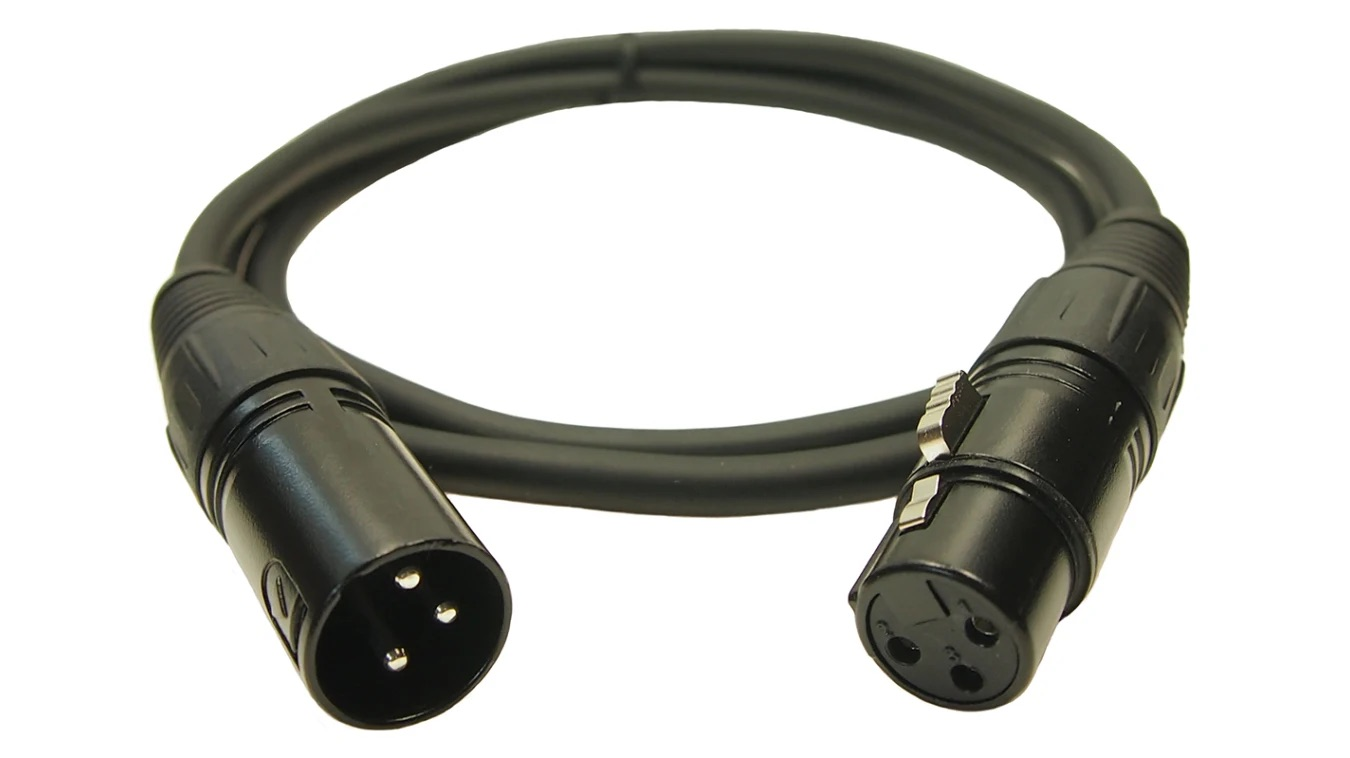
An XLR microphone takes sound and converts it into an analog signal. The “line” part of eXternal Line Return is the cable.
The analog signal is then sent through the cable. The cable is more accurately called an XLR3 cable because it has three pins in it. Two of the pins are positive and negative, which are balanced against each other to screen out interference and any transmission noise that might occur.
The third is grounded, to prevent electrocution.
The signal carried by the cable is delivered to either an analog recording device or an audio interface so that it can be captured or converted for digital recording.
XLR3 cables can only carry audio data and phantom power for driving compressor microphones. They do not carry data.

A USB microphone takes sound and converts it into a digital signal. This digital signal can then be transmitted and recorded by your computer without any intermediate stage.
In addition to audio data, a USB cable can also transmit and receive data.
This means that you can have functionality built into a USB mic that you cannot have with an XLR mic.